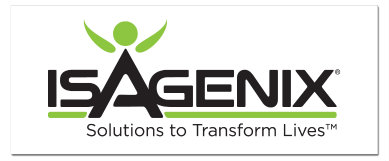Hellerwork
Hellerwork is a type of bodywork created by Joseph Heller, a former NASA aerospace engineer. Like Rolfing, Hellerwork uses deep-tissue massage to help reduce stress and ease mobility.
Heller was originally taught Rolfing by Ida Rolf, Ph.D., a Columbia University trained biochemist, who created the therapy in the 1930s. In 1976 he became the head of the Rolf Institute, now located in Boulder, Colorado, which oversees the training of Rolfing practitioners. Two years later he developed his own variation on the method, which added verbal dialogue and movement exercises to the hands-on work.
How Does Hellerwork Work?
Like Rolfing, Hellerwork is based on the premise that physical and emotional stress–as well as gravity–can throw the body out of vertical alignment and cause the connective tissue known as fascia to become rigid and inflexible. (Fascia encases muscle and connects muscle to bone.) These problems can then lead to more stress, illness, and a loss of general well-being.
Hellerworkers seek to realign the body by using intense pressure and stroking to stretch shortened and tightened fascia back into shape. The goal is to make the fascia softer and more flexible, and to restore its natural balance in relation to muscles, tendons, and bones.
The two components that distinguish Hellerwork from Rolfing–verbal dialogue and movement exercises–complement the massage component. Through verbal dialogue, Hellerworkers help clients explore attitudes, feelings, and past traumas that may be contributing to their current physical and emotional state. Using movement exercises, clients are taught how to sit, stand, walk, run, bend over, and perform other ordinary actions in a stress-free, efficient way. This threefold approach aims to realign the body and release deeply held tensions, which, it is believed, will help increase energy, flexibility, and overall health and well-being.
Health Benefits of Hellerwork?
Proponents of Hellerwork claim that it can relieve respiratory conditions and problems related to muscle tension and stress, as well as treat sports injuries, carpal tunnel syndrome, and back and neck pain.
While some forms of bodywork, such as massage, have shown clear benefits in studies, few studies have been done with Hellerwork. Even so, many Hellerwork patients are very positive about its effects.
If you'd like to try Hellerwork for a specific problem, you should first consult a doctor to rule out any serious underlying medical condition.
What Can I Expect From Hellerwork?
Hellerwork usually consists of 11 sessions, lasting an average of about 90 minutes each. Sessions one through three, known as the "superficial" sessions, typically focus on the surface layers of the fascia. These layers are associated with the muscles that are near the surface of the body. Sessions four through seven involve the deeper fascia and muscles and are called the "core" sessions. Sessions eight through 11 are the "integrative" sessions, which aim to synthesize the work of the earlier sessions.
At the first session, the practitioner will ask you about your medical history, so you can discuss your specific needs and how Hellerwork might address them. For this and subsequent sessions, you will be advised not to eat for a couple of hours prior to the session, and you will be asked to undress to your underwear.
Each session will have a theme related to the part of the body that is being worked on. An example of such a theme is "Inspiration." During this session, the practitioner–through bodywork, dialogue about what inspires you, and exercises–will focus on aligning your rib cage vertically over your pelvis and opening up your breathing.
Some of the deeper work during the 11 sessions may hurt, but it should never be unbearable. You should feel relaxed and energized at the end of each session. The verbal dialogue portion of the therapy will not require you to discuss subjects you may find too difficult or painful.
The practitioner might take photographs or videos of you throughout the 11 sessions to help you follow your progress. The final appointment will be a review session. Your practitioner may recommend postponing further sessions for several months until your body can process the changes and adjustments you have made so far.
Cautions about Hellerwork
Hellerwork should be avoided by those who have rheumatoid arthritis or other serious inflammatory conditions.
Hellerwork can be modified to accommodate pregnant women.
Choosing a Hellerwork Practitioner
There are more than 300 official Hellerwork practitioners in the United States. To obtain certification, a person must undergo a 1,250-hour study and training program. The training is generally divided into intensive courses lasting 12 to 15 days, including weekend classes, over a period of one to two years.
Some insurance companies may cover a portion of the cost for Hellerwork treatments. Contact your own carrier to find out about its policy.




